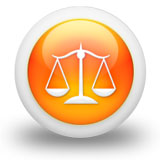We need your consent to use the individual data so that you can see information about your interests, among other things. Click "OK" to give your consent.
ASTM D5675-13(2018)
Standard Classification for Low Molecular Weight PTFE and FEP Micronized Powders
Translate name
STANDARD published on 1.4.2018
The information about the standard:
Designation standards: ASTM D5675-13(2018)
Note: WITHDRAWN
Publication date standards: 1.4.2018
SKU: NS-844661
The number of pages: 4
Approximate weight : 12 g (0.03 lbs)
Country: American technical standard
Category: Technical standards ASTM
The category - similar standards:
Annotation of standard text ASTM D5675-13(2018) :
Keywords:
fluorinated ethylene propylene, FEP, fluoropolymer, line callout, lubricant powder, micronized powder, polytetrafluoroethylene, PTFE,, ICS Number Code 83.080.01 (Plastics in general)
Additional information
| 1. Scope | ||||||||||||||||||||||||||||||
|
1.1 This classification system provides a method of adequately identifying low molecular weight polytetrafluoroethylene (PTFE) and fluorinated ethylene propylene (FEP) micronized powders using a system consistent with that of Classification System D4000. It further provides a means for specifying these materials by the use of a simple line callout designation. This classification covers fluoropolymer micronized powders that are used as lubricants and as additives to other materials in order to improve lubricity or to control other characteristics of the base material. 1.2 These powders are sometimes known as lubricant powders. The powders usually have a much smaller particle size than those used for molding or extrusion, and they generally are not processed alone. The test methods and properties included are those required to identify and specify the various types of fluoropolymer micronized powders. Recycled fluoropolymer materials meeting the detailed requirements of this classification are included (see Guide D7209). 1.3 These fluoropolymer micronized powders and the materials designated as filler powders (F) in ISO 12086-1 and ISO 12086-2 are equivalent.2 1.4 The values stated in SI units as detailed in IEEE/ASTM SI-10 are to be regarded as the standard. 1.5 This standard does not purport to address all of the safety concerns, if any, associated with its use. It is the responsibility of the user of this standard to establish appropriate safety, health, and environmental practices and determine the applicability of regulatory limitations prior to use. 1.6 This international standard was developed in accordance with internationally recognized principles on standardization established in the Decision on Principles for the Development of International Standards, Guides and Recommendations issued by the World Trade Organization Technical Barriers to Trade (TBT) Committee. |
||||||||||||||||||||||||||||||
| 2. Referenced Documents | ||||||||||||||||||||||||||||||
|
We recommend:
Updating of laws
Do you want to be sure about the validity of used regulations?
We offer you a solution so that you could use valid and updated legislative regulations.
Would you like to get more information? Look at this page.




 Cookies
Cookies
